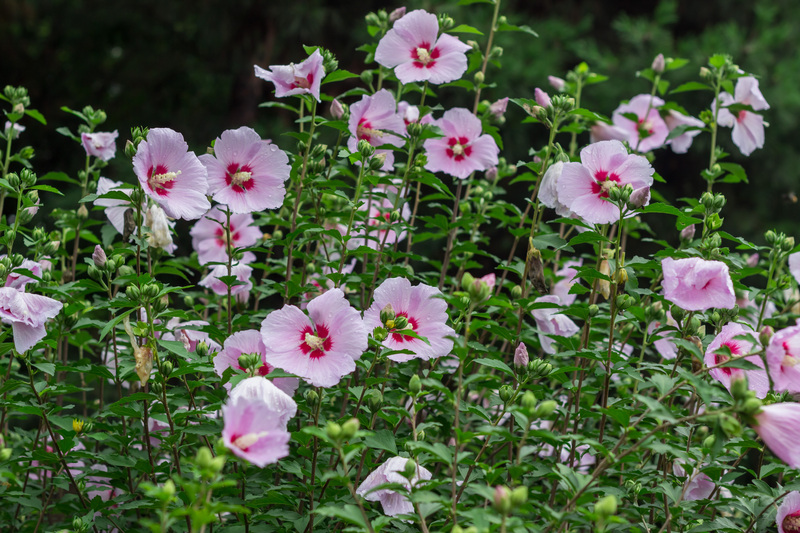Turning Wind Challenges into Garden Solutions
Posted on 05/09/2025
Turning Wind Challenges into Garden Solutions
Gardening is a rewarding pursuit that connects us to nature and enhances the beauty of our surroundings. Yet, many gardeners face a persistent and often underestimated adversary--wind. In this article, we'll explore how turning wind challenges into garden solutions can transform your outdoor space. Whether you're dealing with gusty coastal winds, breezy hillsides, or blustery urban lots, there are creative and practical strategies for reclaiming your garden.

Understanding the Impact of Wind in Your Garden
Wind is more than just a gentle breeze rustling the leaves. Persistent or strong winds can:
- Damage delicate plants and trees
- Dry out soil, causing moisture loss
- Spread weeds and pests
- Make gardening less enjoyable and even hazardous
But wind doesn't have to be your garden's enemy. By understanding its patterns and effects, you can create innovative garden solutions tailored to your specific wind challenges.
Why Addressing Wind Is Crucial for Garden Success
Ignoring wind issues can result in poor plant performance and ongoing frustration. Windswept gardens often have stunted or irregularly shaped plants, exposed roots, and even soil erosion. By turning wind challenges into effective garden solutions, you will:
- Improve plant health and growth
- Reduce water requirements and conserve soil moisture
- Enjoy more comfortable outdoor spaces
- Enhance the overall beauty and productivity of your garden
Assessing Your Garden's Wind Patterns
Every garden is unique--so before you can apply the right solutions, it's important to understand how wind interacts with your outdoor space. Here's how to get started:
1. Observe and Record
- Note strong and prevailing wind directions at different times of the year
- Identify which areas are most exposed vs. sheltered
- Look for microclimates in your garden--corners or spaces where wind is funneled or blocked
- Pay attention to signs of wind damage, such as tilted trunks, broken stems, or parched soil
2. Map Your Garden
- Draw a simple plan of your outdoor space
- Mark existing structures, trees, fences, and windbreaks
- Add arrows showing wind direction
- Highlight exposed spots needing attention
*Tip: Using a garden flag or a windsock can help you visually gauge wind direction and strength over time.*
Top Garden Solutions for Wind Problems
Once you understand your wind challenges, it's time to consider strategic solutions. Below are innovative and proven ways to turn wind challenges into garden opportunities.
1. Creating Effective Windbreaks
Windbreaks are barriers that slow wind speed, protecting delicate plants and structures. They can be:
- Tall hedges
- Rows of trees or shrubs
- Fences or walls
- Trellises with climbing plants
How to Design an Effective Windbreak:
- Place windbreaks perpendicular to the prevailing wind for maximum protection
- Use a mix of dense and permeable materials--solid walls may cause turbulence, while plants allow some airflow, reducing eddies and backdrafts
- Layer plants of different heights for gradual wind dissipation
- For large gardens, stagger plantings to extend protection deeper into your plot
Bonus: Living windbreaks add beauty, shelter wildlife, and provide privacy!
2. Choosing Wind-Resistant Plants
Certain plant species withstand windy conditions much better than others. These "wind warriors" typically have:
- Flexible stems that bend but don't break
- Small, tough, or waxy leaves that reduce water loss
- Deep, robust root systems
Examples of Wind-Tolerant Plants:
- Lavender (Lavandula)
- Juniper (Juniperus)
- Sea buckthorn (Hippophae rhamnoides)
- Russian sage (Perovskia atriplicifolia)
- Pine (Pinus) and other conifers
- Grasses like Panicum and Miscanthus
Tip: When turning wind challenges into plant solutions, consider using native species--they adapt better and provide habitat for local wildlife.
3. Smart Plant Placement and Grouping
- Plant tall, sturdy species on the windward side to shield sensitive and low-growing varieties behind them
- Group plants closely to create mini-ecosystems that buffer wind effects
- Use raised beds or containers with built-in shielding for exposed decks or balconies
- Consider groundcovers in open areas to reduce soil erosion
4. Structural Solutions: Fences, Screens, and Garden Art
For immediate protection or in small urban lots, structural windbreaks work wonders. Options include:
- Lattice or slatted fencing--lets some wind through, reducing turbulence
- Decorative screens made from bamboo or recycled materials
- Movable garden structures--vertical garden walls, windbreak planters
Integrating Art and Design: Sculptural pieces, oversized pots, or even outdoor fabric screens can become both windbreaks and unique focal points in your garden.
5. Soil Improvement Techniques
Wind dries soil rapidly, making it harder for plants to thrive. Transform wind challenges into garden solutions by:
- Mulching heavily with wood chips, straw, or pebbles to retain moisture
- Adding organic matter to soil for improved structure and water retention
- Installing drip irrigation systems that reduce evaporation compared to overhead watering
- Using groundcovers or covering exposed soil with low-growing sedums or thyme
6. Container Gardening in Windy Spaces
- Choose sturdy pots and containers; avoid lightweight plastic, which may tip over easily
- Cluster containers together to reduce wind impact
- Position tall containers near sheltered walls or behind other plants
- Use heavier soils or add small rocks to the bottom for extra weight
Extra Tips for Gardening Success in Windy Areas
- Staking and tying young trees--use flexible ties that allow movement but provide support
- Bonus solution: Plant evergreens to act as year-round wind shields
- When possible, install microclimate features--ponds, berms, or rockeries that slow and redirect wind
- Remember--good airflow can help reduce plant diseases. The goal is to buffer, not block wind completely
Garden Design Ideas that Embrace the Wind
While protecting your garden is essential, embracing wind can also inspire unique design. Here's how to make the most of wind in your landscape:
Incorporate Movement and Sound
- Grow ornamental grasses that sway gracefully
- Hang wind chimes, bells, or mobiles for gentle background music
- Choose plants like Bamboo or Pampas grass for rustling, visual texture
Create Restful Wind-Sheltered Retreats
- Design cozy seating nooks tucked behind hedges or trellises
- Use walls or living fences as both privacy screens and wind buffers
- Blend utility with beauty--vine-covered pergolas offer shade and partial wind protection
Wildlife-Friendly Windbreaks
- Native shrubs and trees provide food and habitat for birds and pollinators
- Layered plantings support biodiversity and help stabilize the environment
Common Mistakes to Avoid
- Building solid walls without gaps: Solid barriers can cause dangerous wind tunneling and down-drafts. Always allow for some airflow.
- Over-pruning windbreaks: Don't strip lower branches, or you'll lose protection near ground level.
- Choosing unsuitable plants: Tender, fragile plants will struggle no matter how much protection you offer.
- Ignoring soil care: Wind and dry soil go hand in hand--keep your soil healthy and covered at all times.

Frequently Asked Questions: Turning Wind Problems into Garden Solutions
Can I garden successfully in very windy locations?
Yes! With the right windbreaks, plant choices, and soil care, even exposed gardens can thrive. Focus on gradual, layered wind protection and choose tough, wind-tolerant species.
Are there any quick fixes for wind-prone gardens?
Short-term solutions include installing temporary fencing, clustering pots, and mulching heavily. However, for lasting success, invest in living windbreaks and adapt your plant palette.
How do I balance wind protection with airflow for plant health?
Aim for moderation--allow gentle breezes to circulate. Avoid "walling off" areas, instead use layered plantings and partially permeable structures for balanced protection.
Conclusion: See Wind as Opportunity, Not Obstacle
Wind is an unavoidable element in many landscapes, but it doesn't have to impede your gardening dreams. By turning wind challenges into garden solutions, you can create resilient, vibrant outdoor spaces. Harness the power of effective windbreaks, choose the right plants, care for your soil, and embrace the beauty and movement that wind brings. With thoughtful design, your garden can flourish no matter how the wind blows.
Ready to transform your windswept garden? Start today, and let the wind inspire new creative solutions for your outdoor space!

